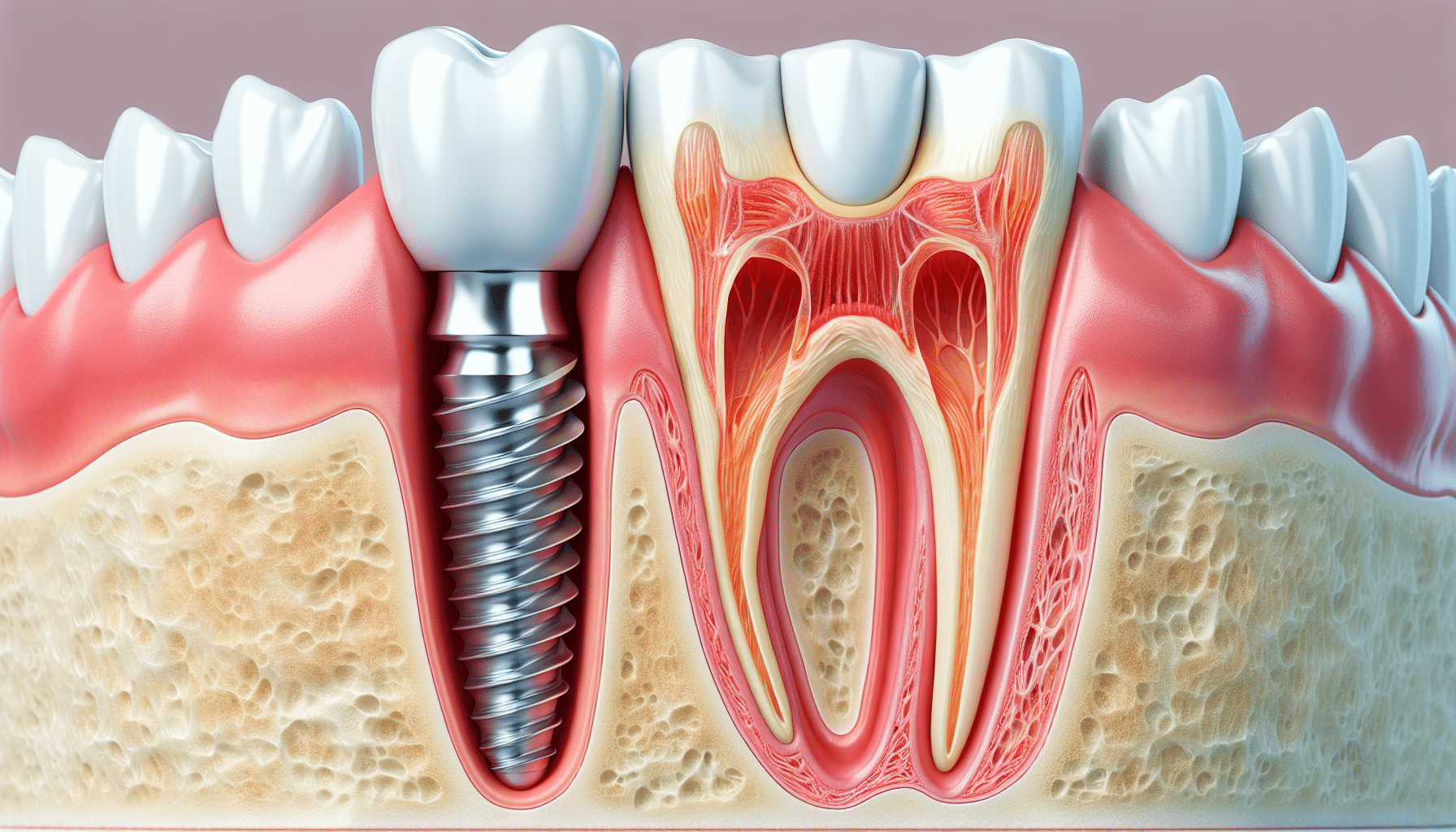3 Easy Facts About Dental Sense Explained
Table of ContentsWhat Does Dental Sense Do?The Facts About Dental Sense UncoveredDental Sense Fundamentals ExplainedSee This Report about Dental Sense
are clinical tools surgically implanted right into the jaw to recover an individual's ability to eat or their look. They offer support for synthetic (phony) teeth, such as crowns, bridges, or dentures. When a tooth is shed because of injury or disease, an individual can experience complications such as quick bone loss, malfunctioning speech, or adjustments to eating patterns that result in discomfort.Oral dental implant systems are composed of a dental implant body and oral implant joint and may likewise include a joint fixation screw. Front tooth filling. The dental implant body is operatively placed in the jawbone in location of the tooth's root. The oral implant joint is normally affixed to the implant body by the joint fixation screw and extends via periodontals into the mouth to sustain the attached synthetic teeth
(https://myanimelist.net/profile/dentalsense1)Structure of The Oral Implant System picking oral implants, talk to your dental supplier about the prospective benefits and threats, and whether you are a prospect for the procedure. Points to take into consideration: Your total wellness is an important consider determining whether you are an excellent prospect for dental implants, how much time it will require to heal, and the length of time the dental implant may remain in location.
Cigarette smoking may influence the healing procedure and lower the long-lasting success of the dental implant. The healing procedure for the dental implant body may take a number of months or longer, during which time you generally have a temporary joint in location of the tooth. the oral implant procedure: Thoroughly adhere to the oral hygiene guidelines provided to you by your dental supplier.
Some Known Facts About Dental Sense.
Implant failure can lead to the need for an additional procedure to take care of or change the implant system. Brings back the capability to eat Restores cosmetic look Aids keep the jawbone from diminishing as a result of bone loss Maintains the health of the surrounding bone and gums Assists keep surrounding (neighboring) teeth stable Enhances lifestyle Damage to bordering all-natural teeth during dental implant placement Injury to the surrounding tissues throughout surgical treatment, such as sinus opening Injury during surgical treatment (for instance, crack of bordering jawbone) Inadequate function, such as seeming like the teeth do not bite with each other normally An experience that the tooth is loose or turning in location arising from a joint screw loosening Implant body failing (looseness of the dental implant body) because of systemic infection, which may be most likely in patients with uncontrolled diabetes due to neighborhood infection in bone and gums sustaining the implant body due to postponed healing, which may be more probable in clients who smoke Problem cleaning the gum tissues around the dental implant, resulting in poor oral hygiene Unattended gum illness Post-surgical tingling as a result of nerve impingement or damages Constantly inform health and wellness care providers and imaging technicians that you have oral implants before any magnetic resonance imaging (MRI) or x-ray procedures.
FDA is not familiar with any damaging occasions reported for MRI this post or x-ray treatments with oral implants. Dental implants systems are typically made of products that comply with global consensus criteria of the International Organization for Standardization (ISO) or ASTM International. These criteria have details of what makes a safe product.

A dental implant is a structure that changes a missing out on tooth. With screw-like devices, the cosmetic surgeon inserts a dental implant into the jawbone, and it acts as a support for a synthetic tooth, called a crown.
Everything about Dental Sense
Some individuals are not qualified for oral implant surgical treatment. It is for oral cosmetic surgeons to operate on people with: intense illnessuncontrollable metabolic diseasebone or soft tissue illness or infectionIf these concerns are resolved, a person can have the surgery. In, oral specialists avoid operating on individuals with: If individuals with any one of the above go through oral implant surgical procedure, there is a greater threat of the dental implant failing.

Dental implant surgical treatment is a personalized process. It's not the very same for everyone. But the complying with offers a basic summary of what you can anticipate your dental expert, dental surgeon, periodontist or prosthodontist to do: Place the implant surgically. Give you time to heal. Attach the message and final crown, bridge or denture.
Next off, your doctor will thoroughly put the dental implant into your jaw. Your surgeon will rearrange your gum tissues and close the incision with stitches. If your implant is near the front of your mouth, your dental expert will certainly make a momentary tooth for you to use until you recover. This way, you will not have a space in your smile while you recover.
The 4-Minute Rule for Dental Sense
During the recovery phase, your jawbone ought to fuse to the oral implant. This procedure can take anywhere from three to nine months.
As soon as your implant heals, your dental professional can affix the joint (small port article) and your last remediation (crown, bridge or denture). This generally takes about one hour to complete and may call for a 2nd small surgery. You should not really feel any pain during your dental implant procedure since your copyright will certainly use medicine to numb your gum tissues.